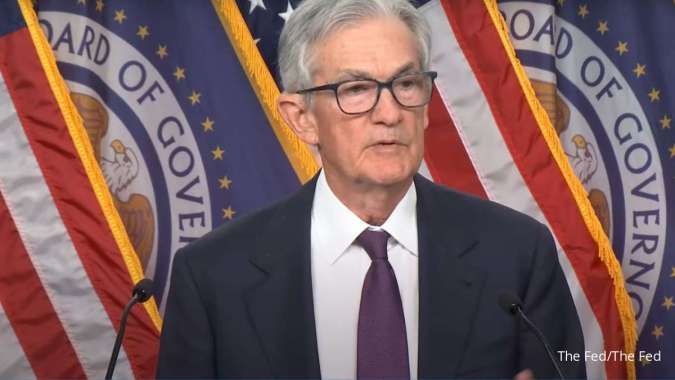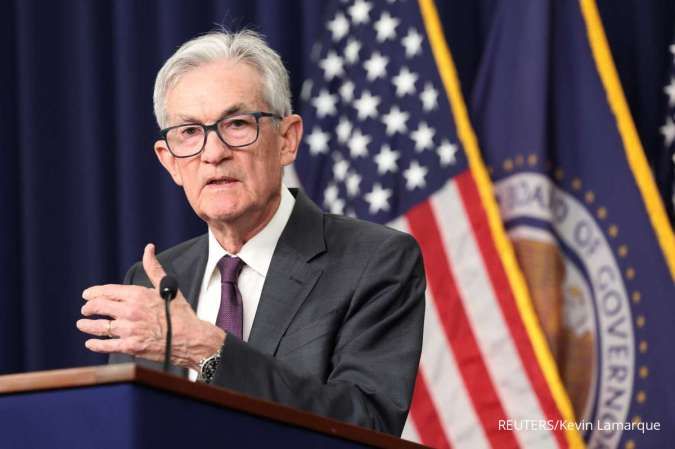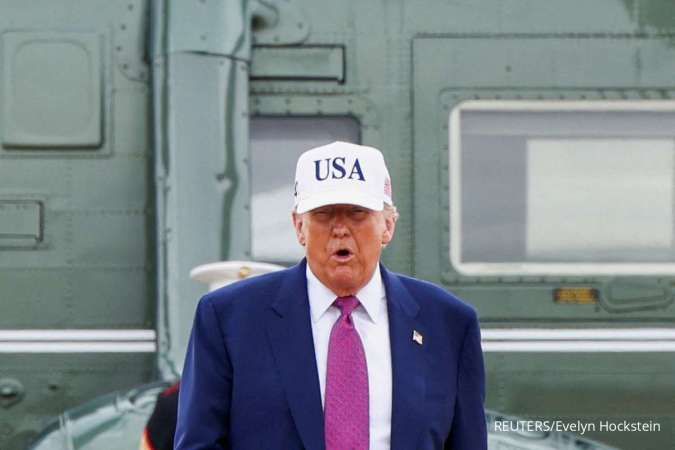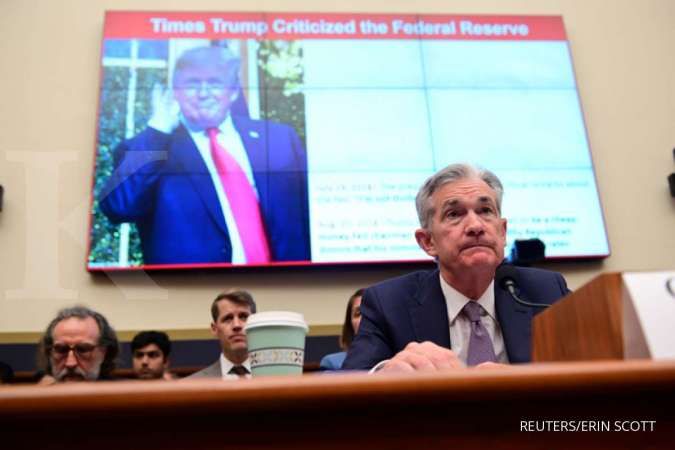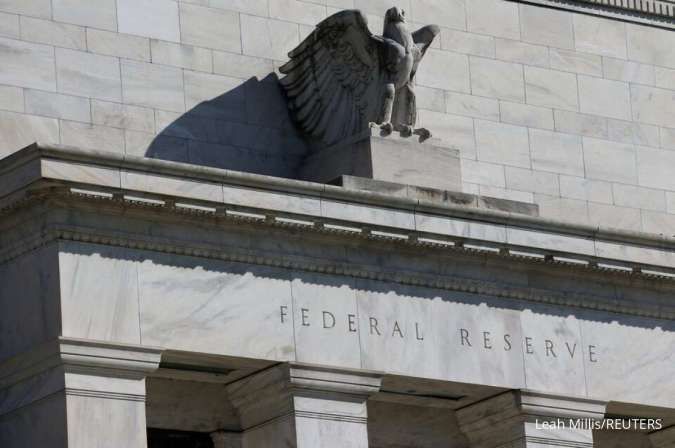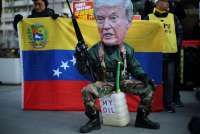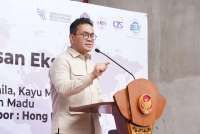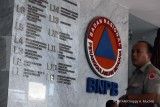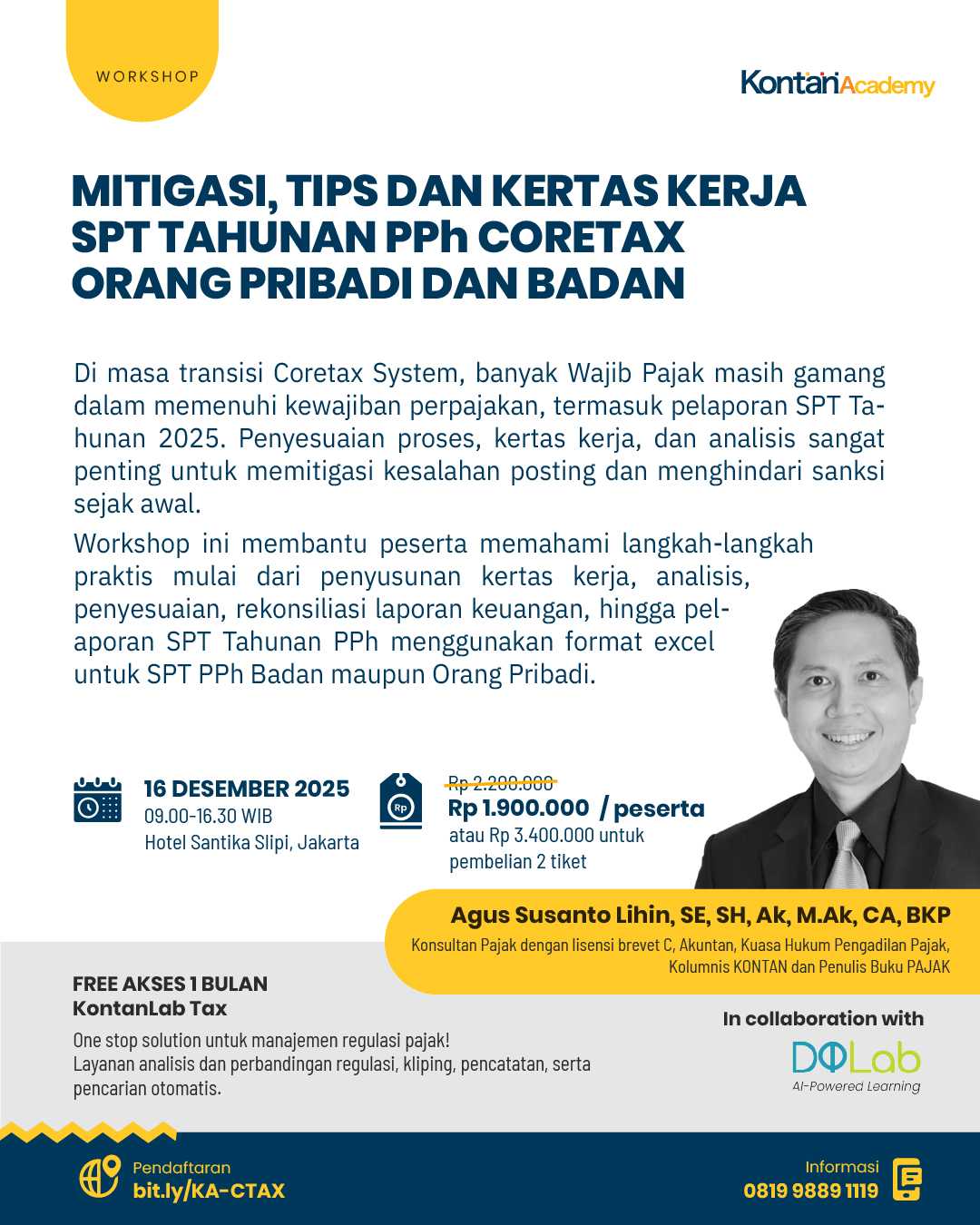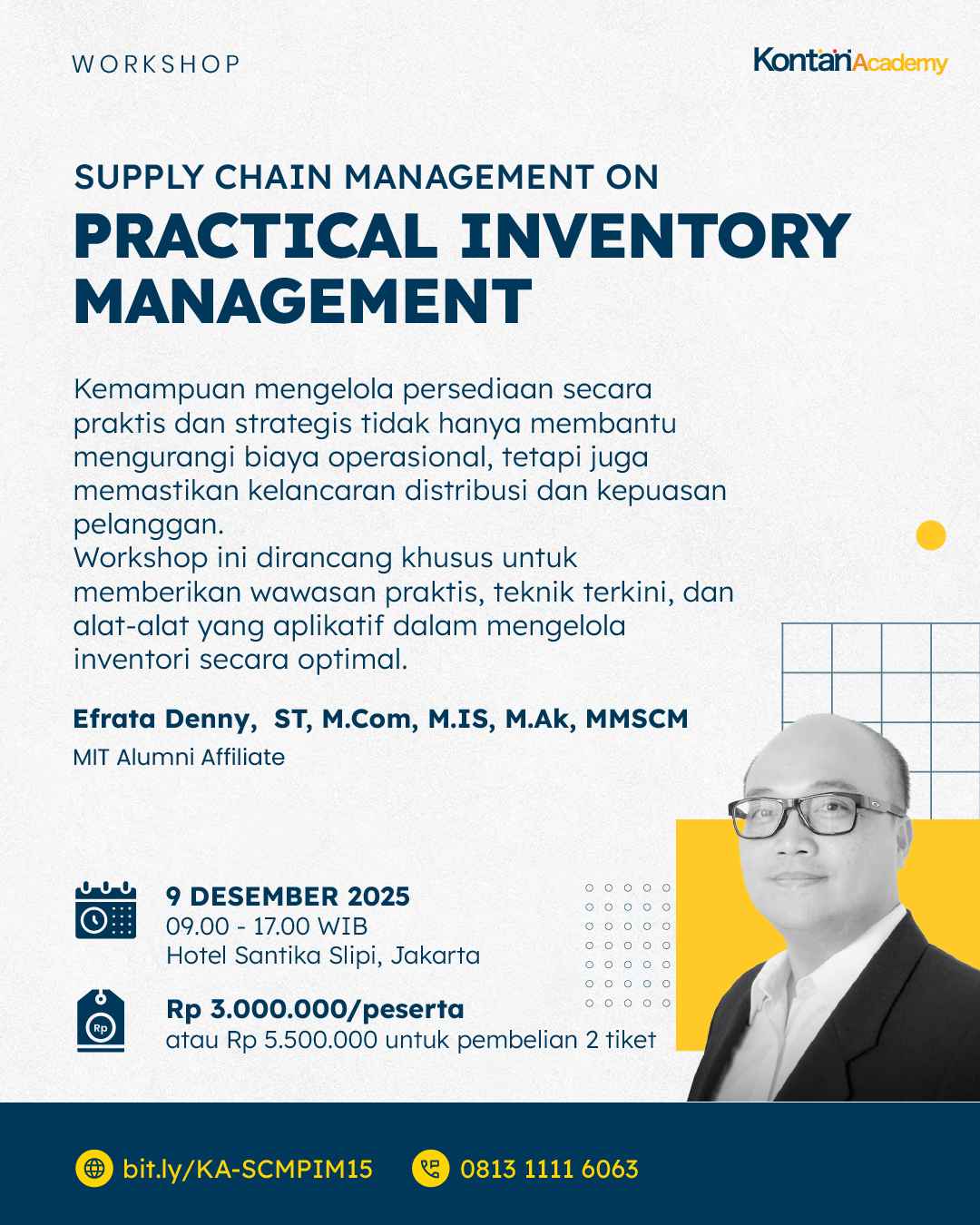Sumber: The Fed | Editor: Hasbi Maulana
23 September 2025
Pidato Ketua The Fed Jerome H. Powell
(Pada acara Greater Providence Chamber of Commerce 2025 Economic Outlook Luncheon, Warwick, Rhode Island, Amerika Serikat)
===
Economic Outlook
Terima kasih. Senang sekali bisa kembali ke Rhode Island. Terakhir kali saya berkesempatan berbicara di Greater Providence Chamber of Commerce adalah pada musim gugur tahun 2019. Saat itu saya mengatakan bahwa, “jika prospek berubah secara signifikan, maka kebijakan juga akan berubah.”
Tak seorang pun dari kita menyangka! Hanya beberapa bulan kemudian, pandemi COVID-19 datang. Baik perekonomian maupun kebijakan kami berkembang drastis dengan cara yang tak seorang pun bisa perkirakan. Bersama dengan langkah-langkah dari Kongres, Pemerintah, dan sektor swasta, respons agresif The Fed membantu mencegah risiko penurunan ekonomi yang secara historis sangat parah.
Pandemi COVID datang setelah pemulihan yang sangat lambat selama satu dekade pasca krisis keuangan global. Dua krisis bersejarah berturut-turut ini meninggalkan luka yang akan bersama kita untuk waktu yang lama. Di negara-negara demokrasi di seluruh dunia, kepercayaan publik terhadap institusi ekonomi dan politik telah diuji. Kita yang bekerja di sektor publik saat ini harus benar-benar fokus menjalankan misi penting sebaik mungkin di tengah gelombang badai dan angin silang yang kuat.
Selama periode penuh gejolak ini, bank sentral seperti The Fed harus mengembangkan kebijakan baru yang inovatif, yang dirancang untuk memenuhi tujuan hukum kami di masa krisis, bukan untuk penggunaan sehari-hari. Terlepas dari dua guncangan unik yang sangat besar ini, ekonomi AS tampil sama baiknya atau lebih baik dibandingkan dengan negara-negara maju besar lainnya di dunia. Seperti biasa, penting bagi kita untuk terus menengok ke belakang dan mengambil pelajaran yang benar dari tahun-tahun sulit ini—dan proses itu sudah berlangsung lebih dari satu dekade.
Baca Juga: Wall Street Menguat Tipis, Investor Cermati Pernyataan Powell dan Data Ekonomi
Prospek Ekonomi
Beranjak ke kondisi saat ini, ekonomi AS menunjukkan ketahanan di tengah perubahan besar dalam kebijakan perdagangan dan imigrasi, serta di bidang fiskal, regulasi, dan geopolitik. Kebijakan-kebijakan ini masih berkembang, dan dampak jangka panjangnya akan memerlukan waktu untuk terlihat.
Data terbaru menunjukkan laju pertumbuhan ekonomi telah melambat. Tingkat pengangguran masih rendah tetapi sedikit meningkat. Pertumbuhan lapangan kerja juga melambat, dan risiko terhadap pekerjaan meningkat. Pada saat yang sama, inflasi baru-baru ini meningkat dan tetap agak tinggi. Dalam beberapa bulan terakhir, jelas terlihat bahwa keseimbangan risiko telah bergeser, mendorong kami untuk mengarahkan kebijakan lebih dekat ke posisi netral pada pertemuan minggu lalu.
PDB tumbuh sekitar 1,5 persen di paruh pertama tahun ini, turun dari 2,5 persen tahun lalu. Perlambatan ini sebagian besar mencerminkan melemahnya belanja konsumen. Aktivitas di sektor perumahan masih lemah, tetapi investasi bisnis pada peralatan dan aset tak berwujud meningkat dibandingkan tahun lalu. Seperti dicatat dalam Beige Book bulan September—laporan yang mengumpulkan informasi kualitatif dari seluruh sistem The Fed—pelaku usaha terus menyatakan bahwa ketidakpastian membebani prospek mereka. Ukuran sentimen konsumen dan bisnis anjlok tajam pada musim semi, kemudian naik kembali, namun masih rendah dibanding awal tahun.
Di pasar tenaga kerja, terjadi perlambatan yang nyata baik dari sisi pasokan maupun permintaan pekerja—perkembangan yang tidak biasa dan menantang. Dalam kondisi pasar tenaga kerja yang kurang dinamis ini, risiko terhadap pekerjaan meningkat. Tingkat pengangguran naik ke 4,3 persen pada Agustus, namun relatif stabil di level rendah selama setahun terakhir. Pertumbuhan lapangan kerja melambat tajam di musim panas, dengan rata-rata hanya 29.000 pekerjaan per bulan dalam tiga bulan terakhir. Laju penciptaan lapangan kerja ini tampak berada di bawah “breakeven rate” yang diperlukan untuk menjaga tingkat pengangguran tetap. Namun sejumlah indikator lain relatif stabil: misalnya, rasio lowongan kerja terhadap pengangguran tetap mendekati 1. Berbagai ukuran lowongan kerja bergerak mendatar, begitu juga klaim awal tunjangan pengangguran.
Baca Juga: Harga Emas Dekati Rekor Tertinggi, Investor Menimbang Pernyataan Powell
Inflasi telah turun signifikan dari puncaknya tahun 2022, tetapi masih agak tinggi dibanding target jangka panjang 2 persen. Data terbaru menunjukkan harga PCE total naik 2,7 persen dalam 12 bulan yang berakhir Agustus, naik dari 2,3 persen pada Agustus 2024. Tanpa makanan dan energi yang volatil, harga PCE inti naik 2,9 persen bulan lalu, juga lebih tinggi dibanding tahun lalu. Harga barang—yang sempat turun tahun lalu—kini mendorong kenaikan inflasi. Data dan survei menunjukkan bahwa kenaikan harga tersebut sebagian besar mencerminkan tarif (bea impor) yang lebih tinggi, bukan tekanan harga yang lebih luas. Disinflasi di sektor jasa berlanjut, termasuk di perumahan. Ukuran ekspektasi inflasi jangka pendek naik sepanjang tahun ini karena berita tarif. Namun, sebagian besar ekspektasi jangka panjang tetap konsisten dengan target 2 persen kami.
Secara keseluruhan, dampak ekonomi dari perubahan besar dalam kebijakan perdagangan, imigrasi, fiskal, dan regulasi masih harus dilihat. Skenario dasar yang wajar adalah bahwa efek tarif terhadap inflasi akan relatif singkat—sekadar “kenaikan satu kali” dalam level harga. “Satu kali” tidak berarti “sekali jadi.” Kenaikan tarif kemungkinan butuh waktu untuk mengalir melalui rantai pasok, sehingga lonjakan harga ini kemungkinan menyebar selama beberapa kuartal dan muncul sebagai inflasi yang agak lebih tinggi dalam periode itu.
Namun ketidakpastian jalur inflasi tetap tinggi. Kami akan menilai dan mengelola risiko inflasi yang lebih tinggi dan persisten dengan hati-hati. Kami akan memastikan bahwa kenaikan harga satu kali ini tidak berubah menjadi masalah inflasi berkelanjutan.
Baca Juga: Harga Emas Dekati Rekor Tertinggi, Investor Menimbang Pernyataan Powell
Kebijakan Moneter
Risiko jangka pendek terhadap inflasi condong naik, sementara risiko terhadap pekerjaan condong turun—situasi yang menantang. Risiko dua arah berarti tidak ada jalan bebas risiko. Jika kami melonggarkan terlalu agresif, pekerjaan menurunkan inflasi bisa tertunda dan kami mungkin harus berbalik arah untuk mencapai target 2 persen. Jika kami mempertahankan kebijakan restriktif terlalu lama, pasar tenaga kerja bisa melemah tanpa perlu. Saat tujuan kami saling bertentangan seperti ini, kerangka kerja kami mengharuskan menyeimbangkan kedua sisi mandat ganda kami.
Meningkatnya risiko penurunan pada pekerjaan telah menggeser keseimbangan risiko dalam mencapai tujuan kami. Oleh karena itu, pada pertemuan terakhir, kami menilai tepat untuk melangkah lebih dekat ke posisi netral, dengan menurunkan kisaran target suku bunga federal funds sebesar 25 basis poin menjadi 4 hingga 4¼ persen. Sikap kebijakan ini, yang masih saya lihat agak restriktif, menempatkan kami pada posisi yang baik untuk merespons perkembangan ekonomi ke depan.
Kebijakan kami tidak berada di jalur yang sudah ditentukan. Kami akan terus menentukan sikap yang sesuai berdasarkan data terbaru, prospek yang berkembang, dan keseimbangan risiko. Kami tetap berkomitmen untuk mendukung lapangan kerja maksimum dan membawa inflasi ke target 2 persen secara berkelanjutan. Keberhasilan kami dalam memenuhi tujuan ini penting bagi seluruh masyarakat Amerika. Kami memahami bahwa tindakan kami berdampak pada komunitas, keluarga, dan bisnis di seluruh negeri.
Terima kasih sekali lagi telah mengundang saya ke sini. Saya menantikan diskusi kita.
===
In English:
September 23, 2025
Economic Outlook
Chair Jerome H. Powell
(At the Greater Providence Chamber of Commerce 2025 Economic Outlook Luncheon, Warwick, Rhode Island)
Thank you. It is a pleasure to be back here in Rhode Island. The last time I had the opportunity to speak to the Greater Providence Chamber of Commerce was in the fall of 2019. I noted then that, "if the outlook changes materially, policy will change as well."1
Little did any of us know! Just a couple of months later, the COVID-19 pandemic arrived. Both the economy and our policy evolved dramatically in ways no one could have predicted. Along with actions by Congress, the Administration, and the private sector, the Fed's aggressive response helped stave off historically severe downside risks to the economy.
The COVID pandemic came on the heels of the painfully slow decade-long recovery from the Global Financial Crisis. These two back-to-back world historical crises have left behind scars that will be with us for a long time. In democracies around the world, public trust in economic and political institutions has been challenged. Those of us who are in public service at this time need to focus tightly on carrying out our critical missions to the best of our ability in the midst of stormy seas and powerful crosswinds.
Throughout this turbulent period, central banks like the Fed have had to develop innovative new policies that were designed to deliver on our statutory goals during times of crisis, rather than for everyday use. Despite these two unique, extremely large shocks, the U.S. economy has performed as well or better than other large, advanced economies around the world. As always, it is essential that we continue to look back and learn the right lessons from these difficult years, and that process has been ongoing for more than a decade.
Turning to the present day, the U.S. economy is showing resilience in the midst of substantial changes in trade and immigration policies, as well as in fiscal, regulatory and geopolitical arenas. These policies are still emerging, and their longer-term implications will take some time to be seen.
Economic Outlook
Recent data show that the pace of economic growth has moderated. The unemployment rate is low but has edged up. Job gains have slowed, and the downside risks to employment have risen. At the same time, inflation has risen recently and remains somewhat elevated. In recent months, it has become clear that the balance of risks has shifted, prompting us to move our policy stance closer to neutral at our meeting last week.
GDP rose at a pace of around one and a half percent in the first half of the year, down from 2.5 percent growth last year. The moderation in growth largely reflects a slowdown in consumer spending. Activity in the housing sector remains weak, but business investment in equipment and intangibles has picked up from last year's pace. As noted in the September Beige Book, a report that gathers qualitative information from across the Fed System, businesses continue to say that uncertainty is weighing on their outlook. Measures of consumer and business sentiment declined sharply in the spring; they have since moved up but remain low relative to the start of the year.
In the labor market, there has been a marked slowing in both the supply of and demand for workers—an unusual and challenging development. In this less dynamic and somewhat softer labor market, the downside risks to employment have risen. The unemployment rate edged up to 4.3 percent in August but has remained relatively stable at a low level over the past year. Payroll job gains slowed sharply over the summer months, as employers added an average of just 29,000 per month over the past three months. The recent pace of job creation appears to be running below the "breakeven" rate needed to hold the unemployment rate constant. But a number of other labor market indicators remain broadly stable. For example, the ratio of job openings to unemployment remains near 1. And multiple measures of job openings have been moving roughly sideways, as have initial claims for unemployment insurance.
Inflation has eased significantly from its highs of 2022 but remains somewhat elevated relative to our 2 percent longer-run goal. The latest available data indicate that total PCE prices rose 2.7 percent over the 12 months ending in August, up from 2.3 percent in August 2024. Excluding the volatile food and energy categories, core PCE prices rose 2.9 percent last month, also higher than the year-ago level. Goods prices, after falling last year, are driving the pickup in inflation. Incoming data and surveys suggest that those price increases largely reflect higher tariffs rather than broader price pressures. Disinflation for services continues, including for housing. Near-term measures of inflation expectations have moved up, on balance, over the course of this year on news about tariffs. Beyond the next year or so, however, most measures of longer-term expectations remain consistent with our 2 percent inflation goal.
The overall economic effects of the significant changes in trade, immigration, fiscal and regulatory policy remain to be seen. A reasonable base case is that the tariff-related effects on inflation will be relatively short lived—a one-time shift in the price level. A "one-time" increase does not mean "all at once." Tariff increases will likely take some time to work their way through supply chains. As a result, this one-time increase in the price level will likely be spread over several quarters and show up as somewhat higher inflation during that period.
But uncertainty around the path of inflation remains high. We will carefully assess and manage the risk of higher and more persistent inflation. We will make sure that this one-time increase in prices does not become an ongoing inflation problem.
Monetary Policy
Near-term risks to inflation are tilted to the upside and risks to employment to the downside—a challenging situation. Two-sided risks mean that there is no risk-free path. If we ease too aggressively, we could leave the inflation job unfinished and need to reverse course later to fully restore 2 percent inflation. If we maintain restrictive policy too long, the labor market could soften unnecessarily. When our goals are in tension like this, our framework calls for us to balance both sides of our dual mandate.
The increased downside risks to employment have shifted the balance of risks to achieving our goals. We therefore judged it appropriate at our last meeting to take another step toward a more neutral policy stance, lowering the target range for the federal funds rate by 25 basis points to 4 to 4-1/4 percent. This policy stance, which I see as still modestly restrictive, leaves us well positioned to respond to potential economic developments.
Our policy is not on a preset course. We will continue to determine the appropriate stance based on the incoming data, the evolving outlook, and the balance of risks. We remain committed to supporting maximum employment and bringing inflation sustainably to our 2 percent goal. Our success in delivering on these goals matters to all Americans. We understand that our actions affect communities, families, and businesses across the country.
Thank you again for having me here. I look forward to our discussion.


/2025/05/08/2106430277.jpg)
